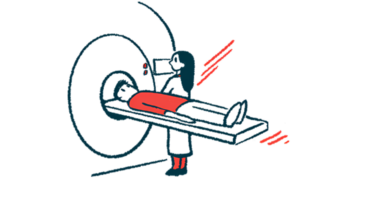Lower Fatigue Reported by MS Patients after aHSCT in Canadian Study

A small group of multiple sclerosis (MS) patients with aggressive disease, who were treated with hematopoietic stem cell transplant in a clinical trial, reported a drop in their fatigue levels that researchers suggested was likely due to lesser inflammation.
The study, “Autologous hematopoietic stem cell transplantation improves fatigue in multiple sclerosis,” was published in the Multiple Sclerosis Journal.
Immunoablation — the wiping out of the immune system — with high-dose chemotherapy, followed by its rescue with autologous hematopoietic stem cell transplantation (aHSCT) has proven to be an effective way of treating inflammatory activity in the central nervous system of MS patients. However, the treatment’s effect on fatigue, a common MS symptom affecting as many as 90% of all patients, has not been examined.
Researchers in Canada aimed to assess fatigue in MS patients before and after aHSCT treatment.
Their study looked at data from a Phase 2 clinical trial (NCT01099930) in which MS patients — with ongoing relapses and progression despite the use of disease-modifying therapies — went through this aHSCT procedure. Patients were followed regularly afterward, and every six months for three years completed a self-reported fatigue questionnaire looking at seven specific measures.
The Multiple Sclerosis Council for Clinical Practice Guidelines recommend the use of a scale called the modified Fatigue Impact Scale (mFIS) for assessing the degree of fatigue experienced by MS patients. mFIS is composed of 21 questions and is a modified form of the more elaborate 40-question FIS.
In total, the study analyzed data from 23 patient, resulting in 148 FIS measurements over the three years.
At baseline, most patients (20) had high mFIS scores that ranged between 30 and 46.5, with a median score of 36. The higher the mFIS score, the worst is the fatigue level.
At a six-month post-treatment follow-up, mFIS score ranges dropped to a median 25.5, declining further to a median score of 23 at the study’s end. This represented a significant drop in fatigue measures with a 36% reduction in mFIS score.
Four patients had a reported 100% reduction in their fatigue scores at three years post-aHSCT.
The researchers also reported that the improved FIS scores correlated with younger age and lesser disability at baseline (study start), “as well as increased independence as evidenced by a return to gainful employment and even driving,” they wrote, suggesting a positive change in social well-being.
In fact, at the end of the study, “seven patients came off disability and gained employment, which was associated with a lower median mFIS score of 16 compared to those who were unemployed at the end of the trial who had a median mFIS of 32,” they wrote.
Driving was associated with a lower total mFIS score, and four patients gained valid driver’s licenses at the study’s end.
Overall, the study showed that 78% of the patients analyzed (18 out of 23) reported lesser fatigue following aHSCT treatment. This reduction was most likely linked to reduced levels of inflammation following treatment, the researchers said. This suggests that active inflammation contributes to MS fatigue, a finding that is consistent with previous studies.
“The use of aHSCT in patients with aggressive MS has been shown to halt all ongoing detectable CNS inflammatory activity with the potential to drastically change the disease course,” the study states.
Another important finding is that patients with depression showed lesser improvement in their mFIS and physical FIS scores, leading the researchers to suggest that “depression can exacerbate fatigue, regardless of disability.”
Overall, the team concluded that MS patients in the study “had significantly less fatigue on average after aHSCT,” and that these findings “may serve to better understand the contribution of ongoing CNS [central nervous system] inflammation to fatigue peculiar to MS.”
But the researchers emphasized that further studies into aHSCT and its benefits in MS are needed, given the small patient group analyzed here, the lack of a control group, and the different technical approaches to aHSCT treatment.






